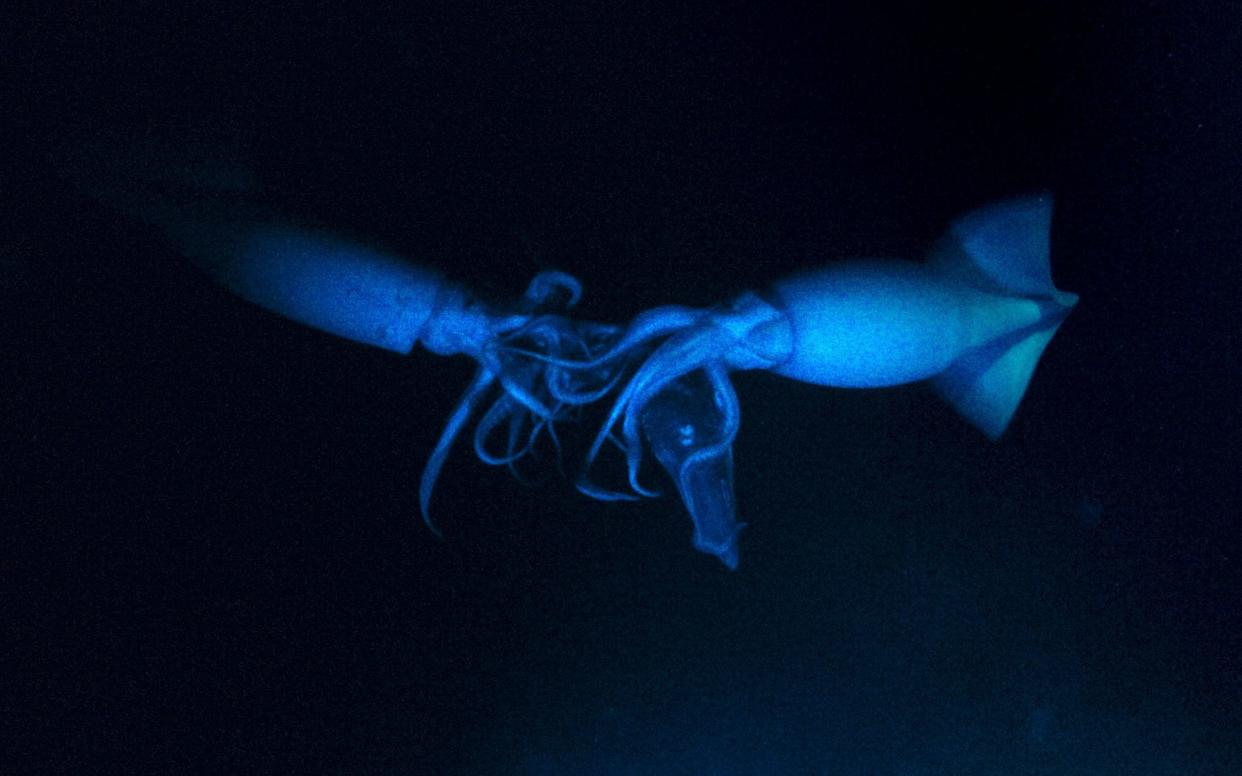Blue Planet II's Humboldt squid: the cannibalistic, deep sea horror that divers are terrified of

The Kraken may be a fictional beast, deadly to ancient sailors and, it would transpire, the last shreds of credibility belonging to The Pirates of the Caribbean franchise, but similar horrors lie in the deep.
On Sunday night, Blue Planet II's second instalment wasted little time before introducing a particularly grisly cephalopod: the Humboldt squid.
There's a good chance a few of the several million watching BBC Two grabbed a cushion or loved one when the beak of the Humboldt squid attempted to engulf the camera lens, tentacles waggling ominously. But the nightmarish scene only worsened: at two metres long, these creatures are as long as a horizontal human man, and can weigh up to 50 kilos. "Like many squid," Attenborough narrated, ominously, "they are voracious hunters", needing to eat up to 10-15 times their body weight daily to survive.
Off the Humboldts set, attacking an innocent party of lantern fish. The worst was yet to come as they "turned on each other", releasing smoke screens of black ink – not to hide their morally abhorrent ways from their peers, but so a bigger squid didn't come after their cannibalistic prey. It was enough to put one off calamari for at least a week.
Humboldt squid are named after Alexander von Humboldt, the Prussian naturalist who discovered the Humbolt Current, in which they reside. They're also more fittingly known as jumbo flying squid or diablo rojo, Spanish for Red Devil, because of the colour they flash when they're excited or angry. They hunt in packs of up to 1,200 (depending on how many of one another they devour) and swim at speeds of 15 miles per hour.
Delve into the murky waters of YouTube and there lies much perilous footage of the Humboldt squid in action, attacking divers and gasping with beaks that can, according to diver Scott Cassell, who has taken to constructing armour to protect himself from the squid, "mechanically amputate your hand".
Blue Planet II: The spectacular BBC natural history series, in pictures
There is, however, truth in the fact that they attack divers. In 2009, swimmers and divers were warned off exploring the waters off San Diego, California, after swarms of Humboldt squid came for their equipment and cameras. One brave soul, diver Roger Uzan, was remarkably unphased, describing the creatures as "curious", and saying they were merely touching his wetsuit with their tentacles to see if they wanted to eat him or not.
Most of the time, however, divers aren't the top of Humbold squid's menu. As shown on Blue Planet II, they prefer to dive to up to 3,000 metres in depth in pursuit of prey, which they then chase up to the water's surface before ripping it to shreds with their frightful combination of tentacles and beak. Their preferred method of dining is under the moonlight. How romantic.

